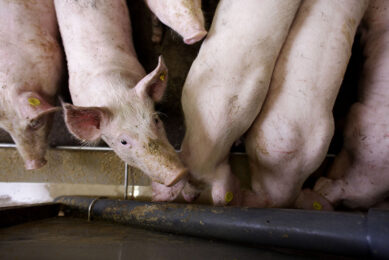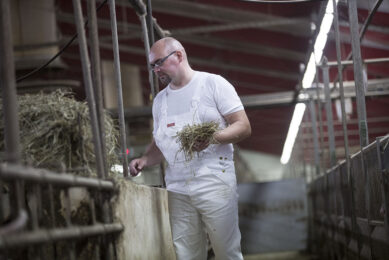UK: “Top pig herds can still compete”
While the average performance of finishing pigs on farms in Britain does not match EU competitors, the top herds can take on the best 10% of units in Denmark, John Richardson of Intervet/Schering Plough Animal Health, told a meeting of pig producers in, North Yorkshire.
Britain had the lowest weight of pigmeat sold per sow a year, the slowest growth rate of finishing pigs and the highest cost per kg of pigmeat produced. “This is not a winning performance in a globally-competitive market,” he declared.
BPEX figures showed average growth rate from weaning to finish in GB was 607g per day, compared with 712g for Denmark, 681g for France, 643g for The Netherlands and Germany, and 618g for Ireland.
But a sample of 12 producers at the meeting, organised by ARM Buildings in conjunction with Farmex, achieved growth rates averaging 748g. This compared with 670g for the UK’s top 33%.
Good growth rates
This shows we can achieve good growth rates in the UK, said John Richardson who suggested that investment in new housing was well worthwhile and could have a surprisingly short pay-back period.© He used an example of a farmer who had put up a new finishing house for £165 per pig place with batches of 500 pigs. Improvements in performance were worth £6 and not using a B&B system saved a further £8 pig.
With pigs growing very fast, at between 955g and 1,030g per day despite being PRRS and EP positive, a throughput of 4.5 batches a year was achieved, saving £63 per pig place annually. This gave a payback period for the building of just 2.6 years, excluding interest payments.© He pointed out that the top 25% of Danish herds achieved an average of 909g per day over a similar weight range.
He stressed the importance of good growth rates in improving throughput and allowing more pigs to be sold per pig place or enabling heavier pigs to be sold for a given area.© This reduced the fixed cost — including labour, housing and capital — per pig sold or kg of pigmeat produced. Faster growth was also linked to improved feed conversion and reduced the cost per kg of pigmeat produced.
Margins
Pigs growing from 30kg to 100kg at an average of 1000g per day could achieve a throughput of 4.74 batches a year and, with a very modest margin of £12 per pig, give a return of £57 per pig place per year, compared with £44 per pig place for pigs averaging 750 g per day. When taking into account lower feed costs through improved feed conversion and the additional weight of pigs produced, the extra margin per pig place could amount to between £55 and £77 per pig place annually.
With this performance the payback period on a new finishing house costing £200 per year would be between 2.6 and 4 years, explained John Richardson.© “The payback on investment is good, but requires confidence!” he said.
Related website
• Intervet/Schering Plough Animal Health
• Bpex
©











